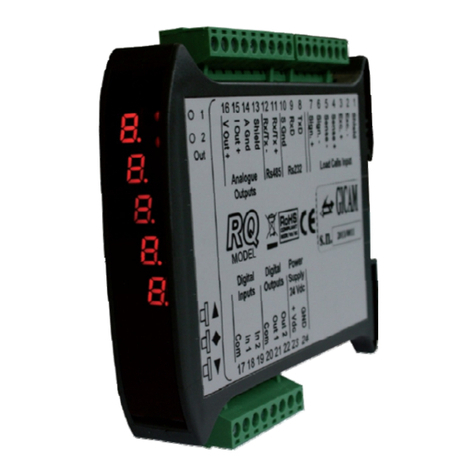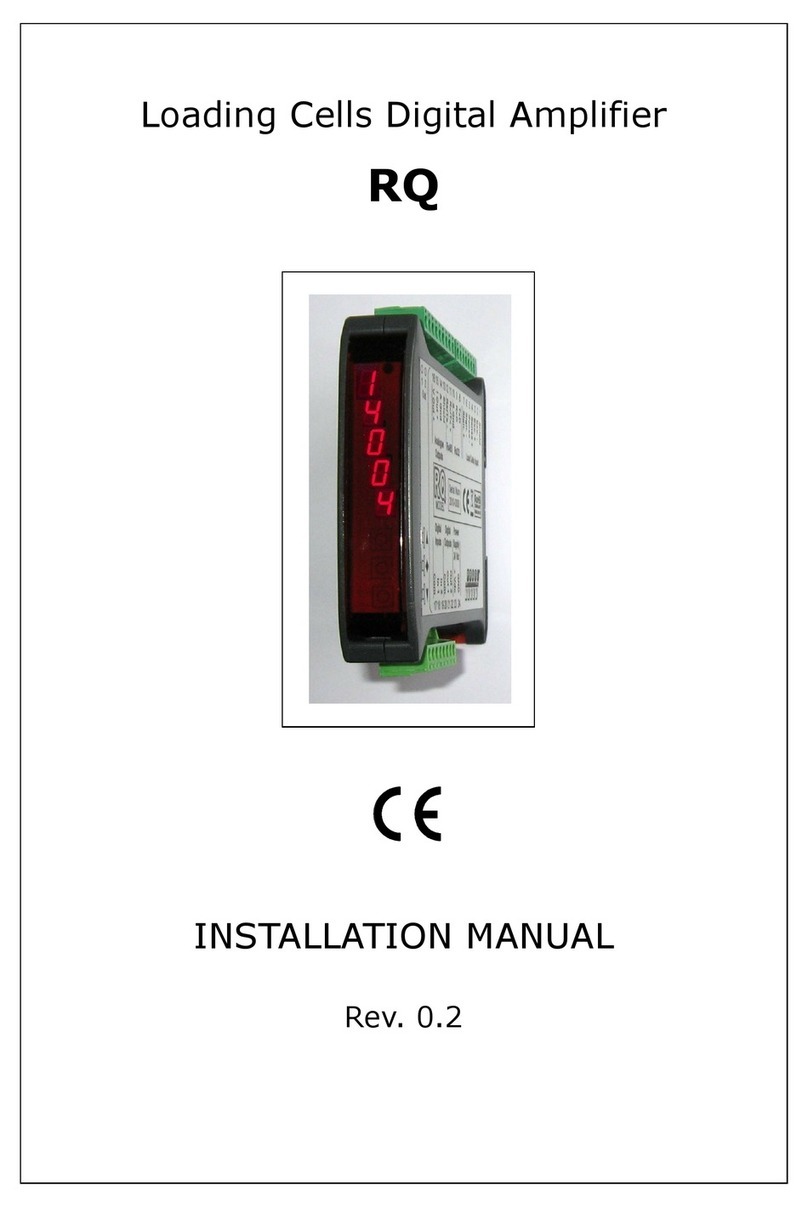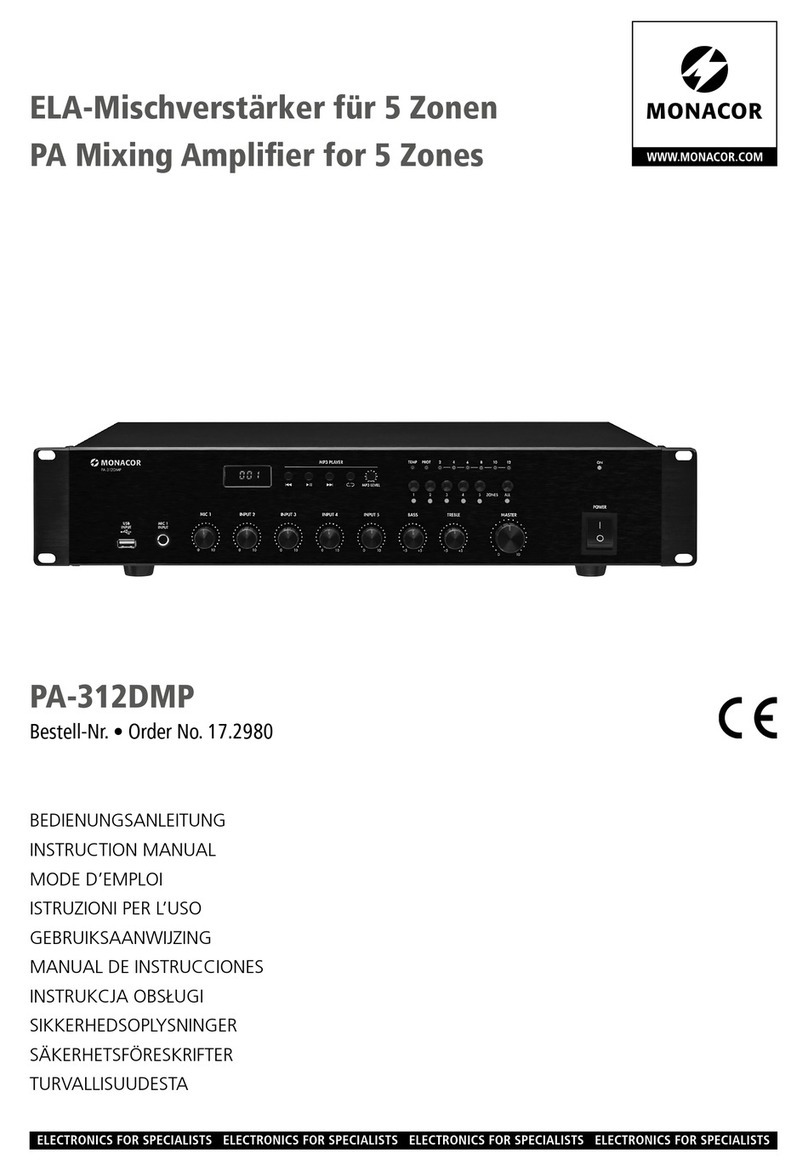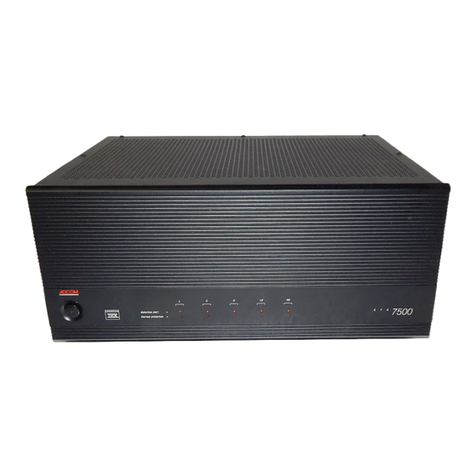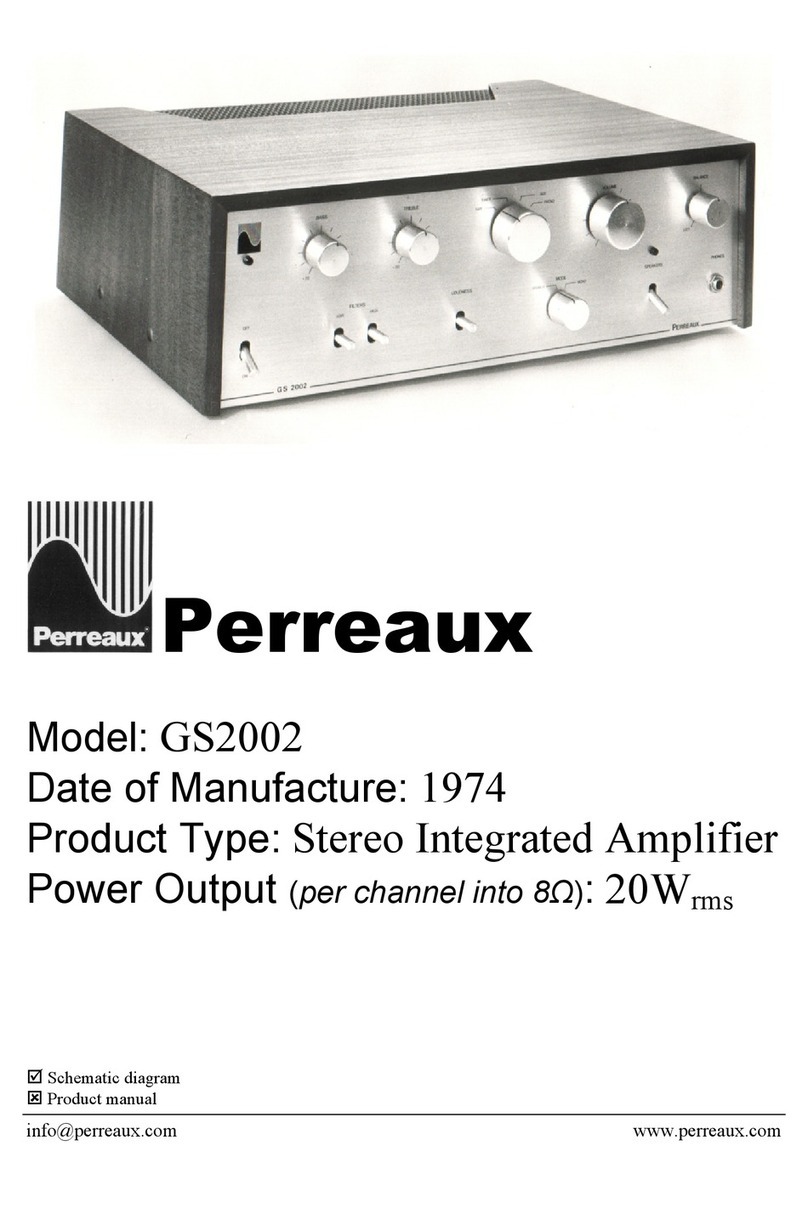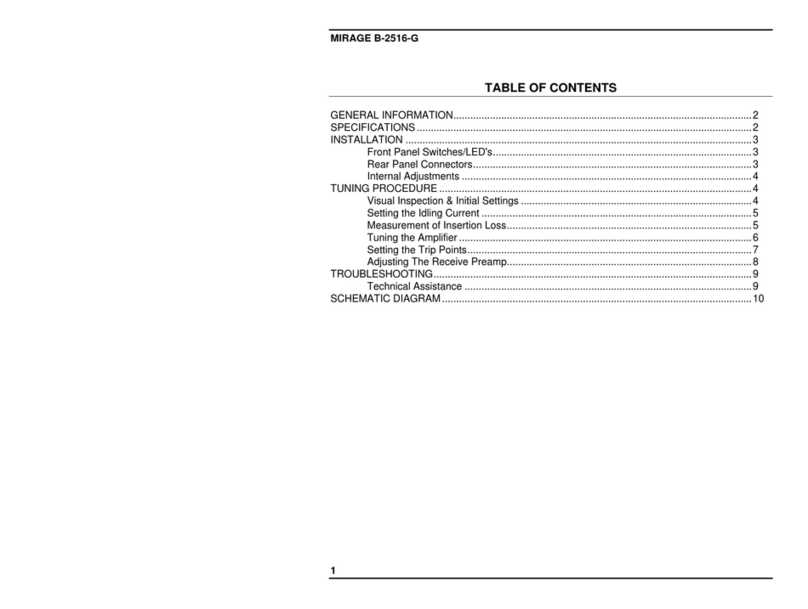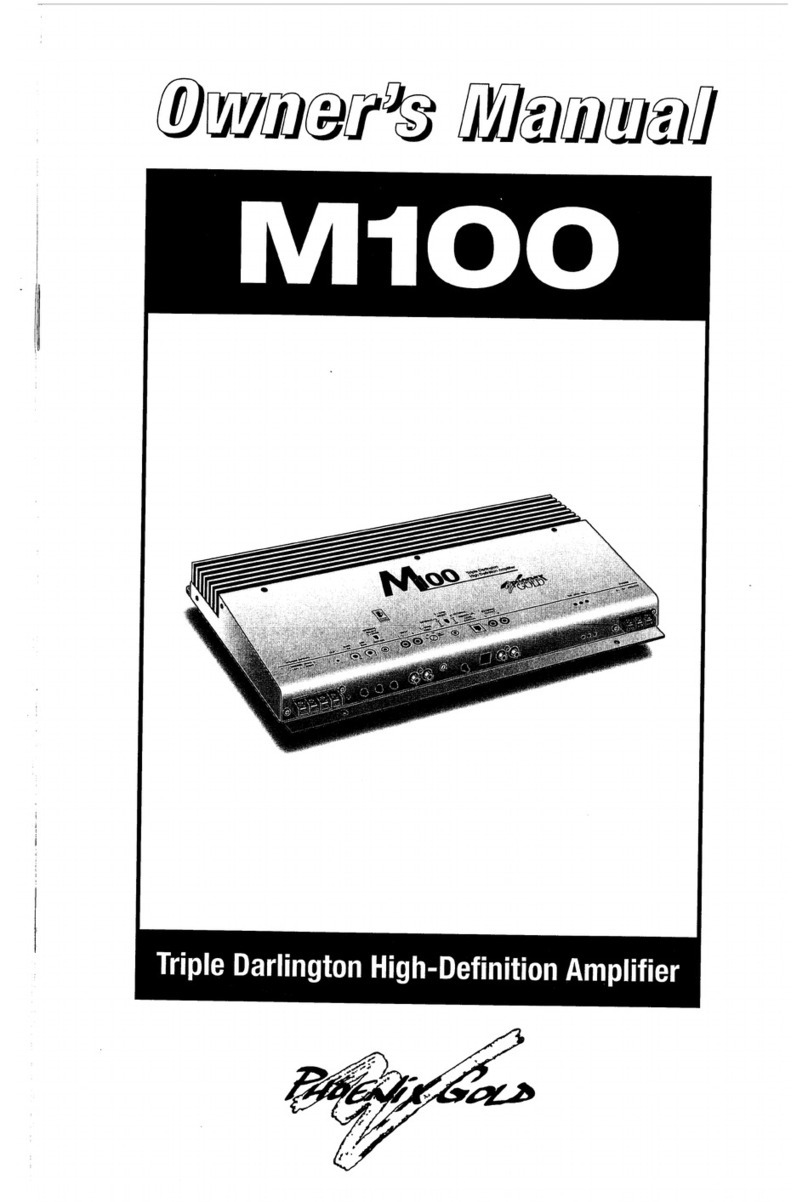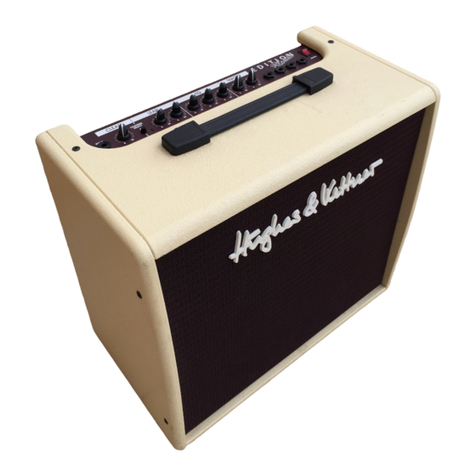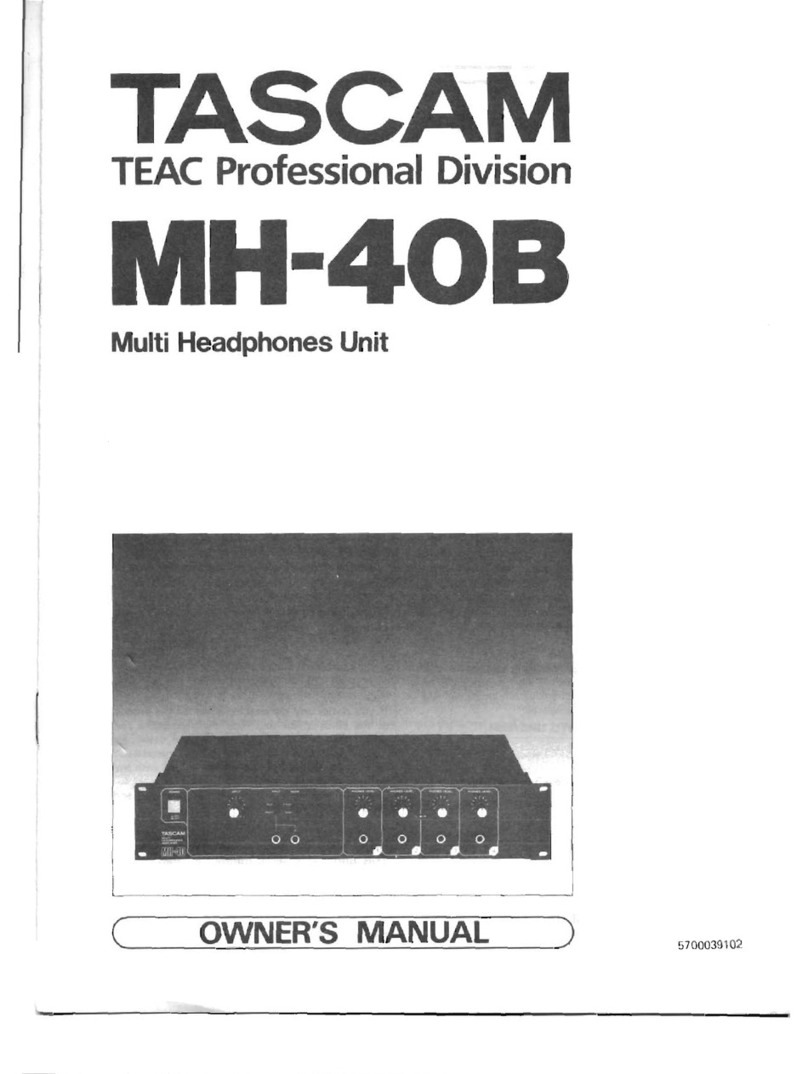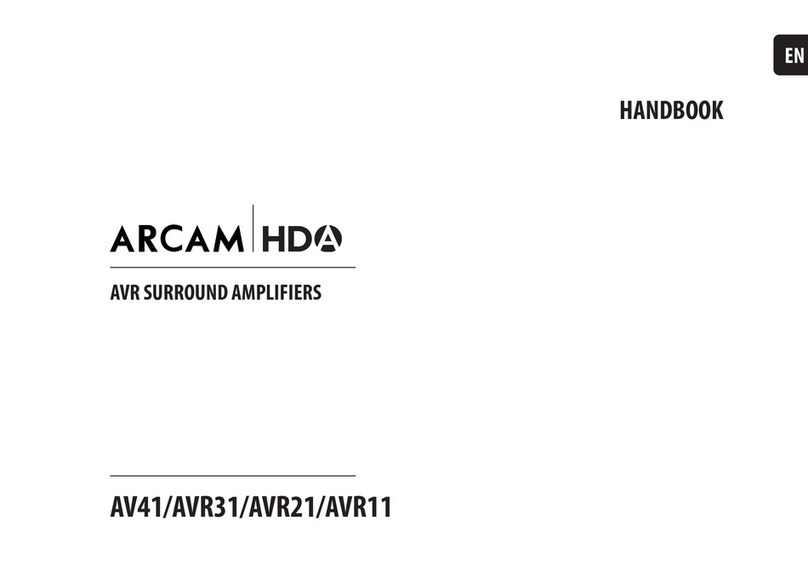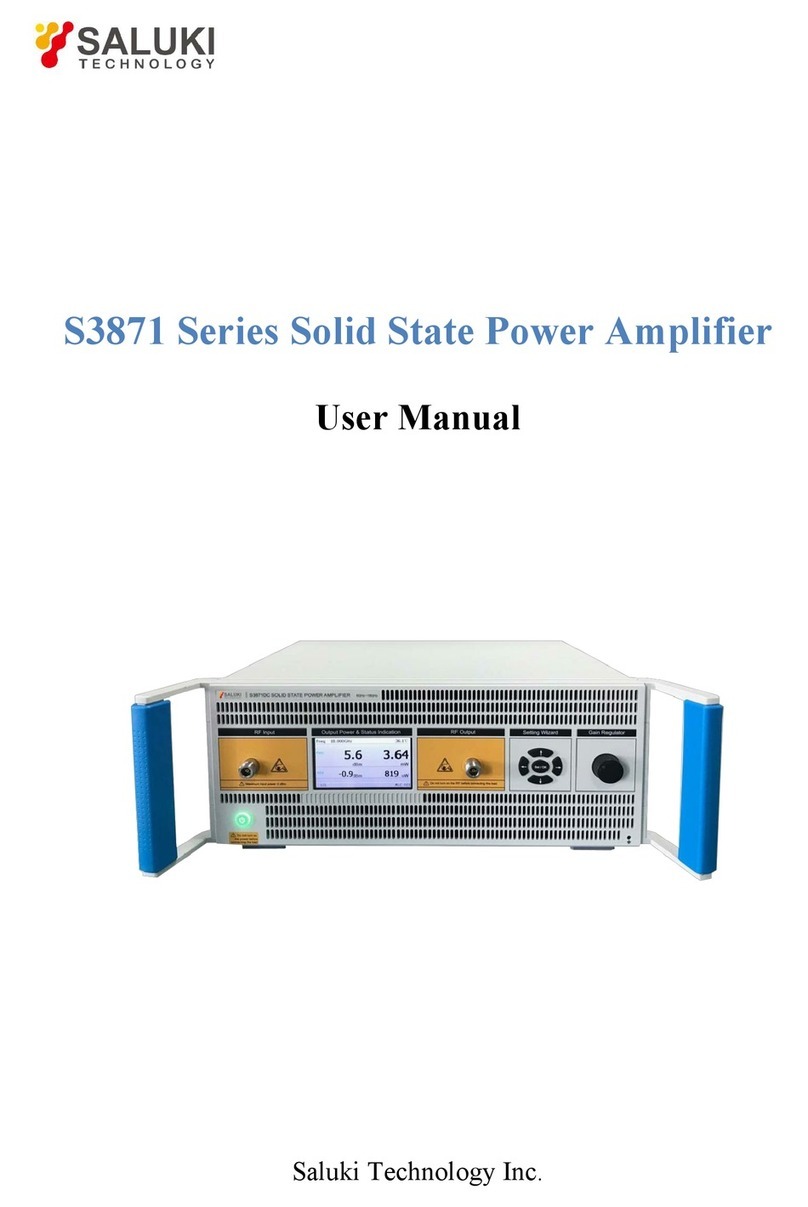Gicam RQA User manual

RQA
SowarePTRQ02Versione1.3
Manuale
Manual
Handbuch

Manuale d’istallazione e d’uso
Installation and user manual
Installations- und Bedienungsanleitung
Amplificatore digitale/analogico per celle di carico
Digital/analog load cell amplifier
Digital/Analog-Verstärker für Wägezellen
RQA

Pagina – page – Seite 1
Indice / Table of contents / Inhaltsverzeichnis
Indice / Table of contents / Inhaltsverzeichnis ........................................................................................ 1
Manuale d’installazione ............................................................................................................................. 3
Caratteristiche tecniche ........................................................................................................................... 3
Simbologia ............................................................................................................................................... 4
Avvertenze ............................................................................................................................................... 4
Montaggio dello strumento ...................................................................................................................... 4
Targa identificativa dello strumento......................................................................................................... 4
Alimentazione dello strumento ................................................................................................................ 5
Connessione delle celle di carico ............................................................................................................ 5
Connessione uscita analogica ................................................................................................................. 6
Riepilogo connessioni ............................................................................................................................. 6
Installation manual ..................................................................................................................................... 9
Technical specification ............................................................................................................................ 9
Symbols ................................................................................................................................................. 10
Warnings ............................................................................................................................................... 10
Installation of the instrument ................................................................................................................. 10
Identification plate of the instrument ..................................................................................................... 10
Power supply of the instrument ............................................................................................................. 11
Connection of the load cells .................................................................................................................. 11
Analog outputs....................................................................................................................................... 12
Connection summary ............................................................................................................................ 12
Manuale d’uso ............................................................................................................................................. 7
Principali caratteristiche d’uso ................................................................................................................. 7
Panello frontale dello strumento .............................................................................................................. 7
Indicatori LED ..................................................................................................................................... 7
Uso della tastiera ..................................................................................................................................... 7
Funzioni operative ................................................................................................................................... 8
Impostazione filtro digitale .................................................................................................................. 8
Correzione offset di zero dell’uscita analogica ................................................................................... 8
Correzione offset di span dell’uscita analogica .................................................................................. 8
User manual .............................................................................................................................................. 13
Main characteristics of use .................................................................................................................... 13
Front panel of the instrument ................................................................................................................ 13
LED indicators .................................................................................................................................. 13
Use of the keyboard .............................................................................................................................. 13
Operational functions ............................................................................................................................ 14
Digital filter setting ............................................................................................................................ 14
Zero offset correction of the analog output ..................................................................................... 14

Pagina – page – Seite 2
Installationsanleitung .............................................................................................................................. 15
Technische Spezifikation ....................................................................................................................... 15
Symbole ................................................................................................................................................. 16
Warnungen ............................................................................................................................................ 16
Installation des Gerätes ......................................................................................................................... 16
Typenschild des Gerätes ....................................................................................................................... 16
Stromversorgung des Instruments ........................................................................................................ 17
Anschluss der Wägezellen .................................................................................................................... 17
Anschluss der analogen Ausgänge ....................................................................................................... 18
Anschlussübersicht ............................................................................................................................... 18
Bedienungsanleitung ............................................................................................................................... 19
Hauptmerkmale der Benutzung ............................................................................................................. 19
Die Frontplatte des Instrumentes .......................................................................................................... 19
LED Anzeigen .................................................................................................................................. 19
Benutzung der Tastatur ......................................................................................................................... 19
Betriebsfunktionen ................................................................................................................................. 20
Einstellung Digitalfilter ...................................................................................................................... 20
Nullpunktkorrektur des Analogausganges ....................................................................................... 20

Pagina – page – Seite 3
Manuale d’installazione
Caratteristiche tecniche
Alimentazione 24 V dc ± 10 % protetta contro l’inversione di polarità.
Protezione con fusibile ripristinabile
Assorbimento massimo 1 Watt
Isolamento Classe II
Categoria d’installazione Categoria II
Temperatura di stoccaggio - 20 °C / + 60 °C
Temperatura di funzionamento - 10 °C / + 50 °C
Umidità massimo 85% senza condensa
LED 2 LED da 3 mm (stato funzionamento)
Tastiera 3 pulsanti (dietro sportello rosso frontale)
Dimensioni d’ingombro 110 x 120 x 230 mm morsettiere comprese
Montaggio Supporto DIN o barra OMEGA
Materiale contenitore Mescola ABS/PC autoestinguente
Connessioni Morsettiere estraibili i vite, passo 5,08 mm
Ingresso celle di carico Massimo 4 celle di carico da 350 Ω in parallelo (o 8 celle da 700 Ω)
Alimentazione celle di carico 4 Volt corrente continua
Linearità 0,01 % del fondo scala
Risoluzione interna 16 – 24 bit
Deriva in temperatura < 0,001 % del fondo scala/°C
Campo di misura da -2,6 mV7V a +2,6 mV/V
Filtro digitale selezionabile 0,1 – 50 Hz
Numero decimali peso da 0 a 3 cifre decimali
Taratura zero e fondo scala eseguibile da pulsanti
Controllo interruzione cavi cella sempre presente
Uscita analogica in tensione ± 10 V / ± 5 V
Risoluzione 16 bit
Taratura digitale da pulsanti
Impedenza ≥ 10 kΩ
Linearità 0,03 % del fondo scala
Deriva in temperatura < 0,002 % del fondo scala/°C
Uscita analogica in corrente 0 – 20 A / 4 – 20 mA
Risoluzione 16 bit
Taratura digitale da pulsanti
Impedenza ≤ 300 Ω
Linearità 0,03 % del fondo scala
Deriva in temperatura < 0,002 % del fondo scala/°C
Conformità alle Normative EMC EN61000-6-2, EN61000-6-3
Conformità sicurezza elettrica EN61010-1

Pagina – page – Seite 4
Simbologia
Attenzione! Questa operazione deve essere eseguita da personale specializzato!
Prestare particolare attenzione alle indicazioni seguenti
Ulteriori informazioni
Avvertenze
Scopo del presente manuale è di portare a conoscenza dell’operatore con testi e figure di chiarimento, le
prescrizioni ed i criteri fondamentali per l’installazione ed il corretto impiego dello strumento.
L’apparecchiatura deve essere installata solo da personale specializzato che deve aver letto e com-
preso il presente manuale. Con “personale specializzato” si intende personale che a motivo della
formazione ed esperienza professionale è stato espressamente autorizzato dal Responsabile alla
sicurezza dell’impianto ad eseguirne l’installazione.
Alimentare lo strumento con tensione il cui valore rientra nei limiti specificati nelle caratteristiche.
E’ responsabilità dell’utente assicurarsi che l’installazione sia conforme alle disposizioni vigenti.
Per ogni anomalia riscontrata, rivolgersi al Centro di Assistenza più vicino. Qualsiasi tentativo di
smontaggio o modifica non espressamente autorizzata ne invaliderà la garanzia e solleverà la Ditta
Costruttrice da ogni responsabilità.
Montaggio dello strumento
Le procedure di seguito riportate, devono essere eseguite da personale specializzato.
Tutte le connessioni vanno eseguite a strumento spento
Targa identificativa dello strumento
È importante comunicare questi dati in caso di richiesta di informazioni o indicazioni riguar-
danti lo strumento uniti al numero del programma e la versione che sono riportati sulla co-
pertina del manuale e vengono visualizzati all’accensione dello strumento.

Pagina – page – Seite 5
Alimentazione dello strumento
Lo strumento viene alimentato attraverso i morsetti 11 e 12.
Il cavo di alimentazione deve essere incanalato separatamente da altri cavi di alimen-
tazioni con tensioni diverse, dai cavi delle celle di carico, encoder e degli input/output
logici e analogici.
Tensione di alimentazione: 24 VDC ± 10%, massimo 1 W
11 Alimentazione + 24 VDC
12 Zero
Connessione delle celle di carico (morsettiera inferiore)
Eventuali connessioni di prolunga del cavo della devono essere schermate con cura,
rispettando il codice colori e utilizzando il cavo del tipo fornito dal costruttore. Le con-
nessioni di prolunga devono essere eseguite mediante saldatura, o attraverso morset-
tiere di appoggio o tramite la cassetta di giunzione fornita a parte.
Il cavo della cella non deve essere incanalato con altri cavi (es. uscite collegate a teleruttori o cavi di
alimentazione), ma deve seguire un proprio percorso.
Il cavo della cella deve avere un numero di conduttori non superiore a quelli utilizzati (4 o 6). Nel ca-
so di cavo a 6 conduttori, dei quali se ne utilizzano solo 4 (alimentazione e segnale), allacciare i fili di
riferimento alle rispettive polarità dei fili di alimentazione.
Allo strumento possono essere collegate fino ad un massimo di 4 celle da 350 ohm in parallelo. La tensione
di alimentazione delle celle è di 4 V corrente continua ed è protetta da corto circuito temporaneo. Il campo
di misura dello strumento prevede l'utilizzo di celle di carico con sensibilità da 1 mV/V a 2.5 mV/V. Il cavo
delle celle di carico va connesso ai morsetti 2 ...7 della morsettiera estraibile a 7 poli. Nel caso di cavo cella
a 4 conduttori, collegare i morsetti di alimentazione cella alle rispettive polarità dei morsetti riferimento (2-5
3-4).
Il circuito interno è galvanicamente isolato dalla tensione di alimentazione.
Collegare lo schermo del cavo cella al morsetto 1.
Connessione a 4 fili
Alimentazione +
Segnale
Alimentazione -
Segnale -
Alimentazione +
Riferimento +
Riferimento -
Alimentazione -
Segnale Segnale -
Connessione a 6 fili

Pagina – page – Seite 6
Uscita analogica
Lo strumento fornisce di serie un'uscita analogica sia in corrente che in tensione.
Caratteristiche:
Uscita analogica in tensione: range da -10 a +10 Volt oppure da -5 a +5 Volt, carico minimo 10 kΩ
Uscita analogica in corrente: range da 0 a 20 mA oppure da 4 a 20 mA. Il carico massimo è 300 Ω.
Per realizzare la connessione utilizzare un cavo schermato, avendo cura di collegare
a terra lo schermo a solo una delle due estremità.
La trasmissione analogica è particolarmente sensibile ai disturbi elettromagnetici si
raccomanda pertanto che i cavi siano più corti possibile e che seguano un proprio per-
corso.
E possibile l’uscita 0-10 Volt oppure 0-5 Volt previa configurazione in fabbrica.
Corrente +
Tensione +
Comune -
15
14
16
Uscita analogica
Riepilogo connessioni
Di seguito viene illustrato un riepilogo dei collegamenti da effettuare nelle morsettiere.
Numero Morsettiera 7 poli - cella a 6 fili
1 Schermo
2 Alimentazione celle -
3 Alimentazione celle +
4 Riferimento +
5 Riferimento -
6 Segnale -
7 Segnale +
Numero Morsettiera 7 poli - cella a 4 fili
1 Schermo
2 Alimentazione celle -
3 Alimentazione celle +
4 Vuoto
5 Vuoto
6 Segnale -
7 Segnale +
Numero Morsettiera 6 poli
11 Alimentazione 24 VDC
12 Alimentazione terra
13 Schermo
14 Terra uscite analogiche
15 Uscita analogica 4-20 mA / 0-20 mA
16 Uscita analogica ± 10 V / ± 5 V

Pagina – page – Seite 7
Manuale d’uso
Principali caratteristiche d’uso
Le caratteristiche principali di funzionamento sono la gestione di un’uscita analogica; l’uscita può essere sia
Il panello frontale dello strumento
Indicatori LED
Lo strumento è provvisto di due indicatori LED:
LED 2 Stato dello strumento
Spento Normale funzionamento
Spento Funzione di correzione offset di zero dell’uscita analogica in corso
Lampeggiante Funzione di correzione offset di span dell’uscita analogica in corso
Acceso Funzione di impostazione filtro digitale in corso
Lampeggio veloce Segnale peso assente o fuori dal campo di lettura
LED 1
Acceso
Lampeggiante
Spento
Acceso
Lampeggio veloce
Uso della tastiera
Lo strumento viene programmato e controllato attraverso la tastiera costituita da tre tasti:
Tasto Funzione tasto
▲ (Pressione lunga) permette di accedere all’impostazione del valore di uscita analogica che si
vuole avere in uscita con il peso presente in bilancia
(Pressione lunga) Accesso alla funzione di impostazione del filtro digitale
▼ (Pressione lunga) Ingresso nella funzione di correzione dell’offset di zero dell’uscita analogica

Pagina – page – Seite 8
Funzioni operative
Impostazione filtro digitale
Premere il tasto per 3 secondi per accedere all’impostazione del filtro digitale.
▲ Incrementa filtro
Conferma e torna al normale funzionamento
▼ Decrementa filtro
Quando si è all’interno della funzione di impostazione filtro, I LED sono entrambi accesi
Premendo il tasto ▲ viene incrementato il filtro peso (selezionabile da 0 a 9).
Premendo il tasto ▼ viene decrementato il filtro peso (selezionabile da 0 a 9).
Quando viene modificato il filtro tramite la pressione di uno di questi due tasti il LED 1 resta acceso fisso
mentre il LED 2 lampeggia un numero di volte pari al filtro selezionato. In caso di filtro = 0 si ha un lampeg-
gio di entrambi i LED.
Correzione offset di zero dell’uscita analogica
A bilancia scarica premere ▼ (pressione lunga) per entrare nella funzione di correzione zero analogico.
Quando si è al interno della funzione di correzione di zero LED 1è lampeggiante mentre il LED 2 è spen-
to .
Premendo il tasto ▲ viene incrementato l’offset di zero dell’uscita analogica. Con pressione lunga viene
eseguita una correzione grossolana dell’offset, mentre con pressione corta viene eseguita la correzione
fine.
Premendo il tasto (pressione corta) l’uscita analogica si posiziona vicino allo zero.
Premendo il tasto ▼ viene decrementato l’offset di zero dell’uscita analogica. Con pressione lunga viene
eseguita una correzione grossolana dell’offset, mentre con pressione corta si esegue la correzione fine.
Premere il tasto (pressione lunga) per uscire dalla funzione.
Correzione offset di span dell’uscita analogica
A bilancia scarica premere ▲ (pressione lunga) per entrare nella funzione di correzione span analogico.
Quando si è al interno della funzione di correzione di zero LED 1è spento mentre il LED 2 è lampeggian-
te .
Premendo il tasto ▲ viene incrementato l’offset di span dell’uscita analogica. Con pressione lunga viene
eseguita una correzione grossolana dell’offset, mentre con pressione corta viene eseguita la correzione
fine.
Premendo il tasto ▼ viene decrementato l’offset di span dell’uscita analogica. Con pressione lunga viene
eseguita una correzione grossolana dell’offset, mentre con pressione corta si esegue la correzione fine.
Premere il tasto (pressione lunga) per uscire dalla funzione.

Pagina – page – Seite 9
Installation manual
Technical specification
Power supply 24 V direct current ± 10 % protected against inversion of polarity.
Protection resettable fuse
Maximum power consumption 1 Watt
Insulation Class II
Installation category Category II
Storage temperature -4 °F / 140 °F
Operating temperature 14 °F / 122 °F
Humidity maximum 85% non-condensing
LED 2 LED with 3 mm (function status)
Keyboard 3 keys (behind red front cover)
Overall dimensions 4.33 x 4.72 x 0.90 in including terminal blocks
Installation Support for DIN or OMEGA rail
Material of housing Blend ABS/PC self-extinguishing
Wire connections Removable screw terminals, pitch terminal blocks 5,08 mm
Load cells input Maximum 4 load cells with 350 Ω in parallel (or 8 cells with 700 Ω)
Power supply cells 4 Volt direct current
Linearity 0,01 % of full scale
Internal resolution 16 – 24 bit
Temperature deviation < 0,001 % of full scale/°C
Measuring range From -2,6 mV/V to +2,6 mV/V
Digital filter Selectable 0.1 Hz – 50 Hz
Weight decimals from 0 to 3 decimal numbers
Calibration Zero and full scale executable through buttons
Cell cable break check always present
Analog exit in tension ± 10 V / ± 5 V
Resolution 16 bit
Calibration digital through buttons
Impedance ≥ 10 kΩ
Linearity 0,03 % of full scale
Temperature deviation < 0,002 % of full scale/°C
Analog exit in current 0 – 20 A / 4 – 20 mA
Resolution 16 bit
Calibration digital through buttons
Impedance ≤ 300 Ω
Linearity 0,03 % of full scale
Temperature deviation < 0,002 % of full scale/°C
Compliance to EMC norms EN61000-6-2, EN61000-6-3
Compliance electric safety EN61010-1

Pagina – page – Seite 10
Symbols
Attention! This operation has to be carried out by specialized personnel!
Pay particolar attention to the follwoing indications!
Further information
Warnings
The purpose of this manual is to bring to the operator's knowledge with clarification texts and figures, the
requirements and the fundamental criteria for the installation and correct use of the instrument.
The equipment must be installed only by specialized personnel who must have read and understood
this manual. "Specialized personnel" means personnel who, because of training and professional
experience, have been expressly authorized by the plants’ safety manager to carry out this installa-
tion.
Supply the instrument with voltage whose value falls within the limits specified in the characteristics.
It is the user's responsibility to ensure that the installation complies with the current norms.
For any anomaly found, contact the nearest Service Center. Any attempted dismantling or modifica-
tion not expressly authorized will void the warranty and release the manufacturer from any responsi-
bility .
Installation of the instrument
The following procedures must be carried out by specialized personnel.
All connections must be made with the instrument switched off.
Identification plate of the instrument
It is important to communicate this data in case of request for information or indications con-
cerning the instrument together with the program number and the version which are shown
on the cover of the manual and are displayed when the instrument is switched on.

Pagina – page – Seite 11
Power supply of the instrument
The instrument is powered through terminals 11 and 12.
The power supply cable must be channeled separately from other power supply cables
with different voltages, from load cell cables, encoders and logical and analogue in-
puts / outputs.
Supply voltage: 24 VDC ± 10%, maximum 1 W
11 Power supply + 24 VDC
12 Zero
Connection of the load cells
Any cable extension connections must be carefully shielded, respecting the color code
and using the cable of the type supplied by the manufacturer. The extension connec-
tions must be made by welding, or through support terminal blocks or through the
junction box supplied separately.
The cell cable must not be channeled with other cables (e.g. outputs connected to remote switches
or power cables), but must follow its own path.
The cell cable must have a number of conductors not higher than those used (4 or 6). In the case of
6-conductor cable, of which only 4 are used (power supply and signal), connect the reference wires
to the respective polarity of the power supply wires.
Up to a maximum of four 350 ohm cells in parallel can be connected to the instrument. The cell power sup-
ply voltage is 4 V DC and is protected against a temporary short circuit. The measuring range of the instru-
ment involves the use of load cells with sensitivity from 1 mV / V to 2.5 mV / V. The load cell cable must be
connected to terminals 2 ... 7 of the 7-pin removable terminal block. In the case of a 4-wire cell cable, con-
nect the cell power terminals to the respective polarity of the reference terminals (2-5 3-4).
The internal circuit is galvanically isolated from the supply voltage.
Connect the shield of the load cell cable to the terminal 1.
Connection with 4 wires
Power supply +
Signal +
Power supply -
Signal -
Power supply +
Reference +
Reference -
Power supply -
Signal + Signal -
Connection with 6 wires

Pagina – page – Seite 12
Analogue outputs
The instrument supplies an analog output in current and one in tension.
Characteristics:
Analog output in tension: range from -10 to +10 Volt or from -5 to +5 Volt, minimum load 10 kΩ
Analog output in current: range from 0 to 20 mA or from 4 to 20 mA. The maximum load is 300Ω.
To make the connection use a shielded cable, making sure to connect the shield to
ground at only one of the two ends.
The analogue transmission is particularly sensitive to electromagnetic disturbances. It
is therefore recommended that the cables be as short as possible and follow their own
path.
It is possible to have an output 0-10 Volt or 0-5 Volt after previous configuration in the factory.
Current +
Tension +
Common -
15
14
16
Analog output
Connection summary
Below is a summary of the connections to be made in the terminal blocks.
Number 7 pin terminal block - cell with 6 wires
1 Shield
2 Power supply load cells -
3 Power supply load cells +
4 Reference +
5 Reference -
6 Signal -
7 Signal +
Number 7 pin terminal block - cell with 4 wires
1 Shield
2 Power supply load cells -
3 Power supply load cells +
4 Empty
5 Empty
6 Signal -
7 Signal +
Number 6 pin terminal block
11 Power supply 24 VDC
12 Ground power supply
13 Shield
14 Ground analog outputs
15 Analog output 4-20 mA / 0-20 mA
16 Analog output ± 10 Volt / ± 5 Volt

Pagina – page – Seite 13
User manual
Main characteristics of use
The main operating features are the management of an analog output, the output can be either in Volt or in
mA.
Front panel of the instrument
LED indicators
The instrument is equipped with two LED indicators:
LED 2 Status of the instrument
Off Normal operation
Off Zero offset correction function of the analog output in execution
Flashin Span offset correction function of the analog output in execution
On Digital filter setting function in execution
Fast flashing Weight signal absent or outside the reading range
LED 1
On
Flashing
Off
On
Fast flashing
Use of the keyboard
The instrument is programmed and controlled by the keyboard consisting of three keys:
Key Key function
▲ (Long press) allows you to access the setting of the analogue output value that you want to
have at the output with the weight present on the scale
(Long press) Access to the digital filter setting function
▼ (Long press) Enters in the zero offset correction function of the analog output

Pagina – page – Seite 14
Operational functions
Digital filter setting
Press the key for 3 seconds to access the digital filter settings.
▲ Increase filter
Confirm and return to normal operation
▼ Decrease filter
When you are inside the filter setting function, the LEDs are both lit .
Pressing the ▲ key the weight filter is increased (selectable from 0 to 9).
Pressing the ▼ key the weight filter is decreased (selectable from 0 to 9).
Whent the weight filter is changed by pressing one of those two keys, the LED no. 1 remains on steadily
while LED 2 is blinking a number of times equal to the selected filter. In case the filter is zero, both LED’s
are flashing.
Zero offset correction of the analog output
With the scales empty, press ▼ (long pess) to access the analog zero offset correction.
When you are inside the zero offset correction function, the LED no. 1 is flashing while the LED no. 2 is
off .
Pressing the ▲ key increases the zero offset of the analog output. With a long press, a rough correction of
the offset is performed, while a fine correction is performed with short pressure .
Pressing the key (short press) the analog output is positioned close to zero.
Pressing the ▼key decreases the zero offset of the analog output. With a long press, a rough correction of
the offset is performed, while a fine correction is performed with short pressure .
Press the key (long press) to exit this function.
Span offset correction of the analog output
With the scales empty, press ▲ (long pess) to access the analog span offset correction.
When you are inside the zero offset correction function, the LED no. 1 is off while the LED no. 2 is flash-
ing .
Pressing the ▲ key increases the span offset of the analog output. With a long press, a rough correction of
the offset is performed, while a fine correction is performed with short pressure .
Pressing the ▼key decreases the span offset of the analog output. With a long press, a rough correction of
the offset is performed, while a fine correction is performed with short pressure .
Press the key (long press) to exit this function.

Pagina – page – Seite 15
Installationsanleitung
Technische Spezifikation
Stromversorgung 24 V Gleichstrom ± 10 % gegen Polaritätsumkehr geschützt.
Schutz durch Sicherung
Maximale Stromaufnahme 1 Watt
Isolierung Klasse II
Installationskategorie Kategorie II
Lagertemperatur - 20 °C / + 60 °C
Betriebstemperatur - 10 °C / + 50 °C
Luftfeuchtigkeit Maximal 85% nicht kondensierend
LED 2 LED mit 3 mm (Funktionsstatus)
Tastatur 3 Tasten (hinter roter Frontklappe)
Abmessungen 110 x 120 x 230 mm inklusive Klemmanschlüsse
Installation DIN Halterung oder OMEGA Leiste
Material Gehäuse Mix ABS/PC selbstverlöschend
Kabelanschlüsse Herausnehmbare Schraubklemmen, 5,08 mm Rastermaß
Eingang Wägezellen Maximal 4 Zellen mit 350 Ω parallel (oder 8 Zellen mit 700 Ω)
Stromversorgung Zellen 4 Volt Gleichstrom
Linearität 0,01 % des Skalenendwertes
Interne Auflösung 16 – 24 bit
Temperaturabweichung < 0,001 % des Skalenendwert/°C
Messbereich Von -2,6 mV/V bis +2,6 mV/V
Digitalfilter Wählbar 0.1 Hz – 50 Hz
Dezimalstellen Gewicht Von 0 bis 3 Dezimalstellen
Kalibrierung Null und Endwert Über Tasten ausführbar
Kabelbruchprüfung Immer aktiv
Analogausgang Spannung ± 10 V / ± 5 V
Auflösung 16 bit
Kalibrierung Digital über Tasten
Impedanz ≥ 10 kΩ
Linearität 0,03 % des Skalenendwertes
Temperaturabweichung < 0,002 % des Skalenendwert/°C
Analogausgang unter Strom 0 – 20 A / 4 – 20 mA
Auflösung 16 bit
Kalibrierung Digital über Tasten
Impedanz ≤ 300 Ω
Linearität 0,03 % des Skalenendwertes
Temperaturabweichung < 0,002 % des Skalenendwert/°C
Konformität EMC Normen EN61000-6-2, EN61000-6-3
Konformität elektrische Sicherheit EN61010-1

Pagina – page – Seite 16
Symbole
Achtung! Dieser Vorgang muss von Fachpersonal ausgeführt werden!
Beachten Sie besonders die folgenden Hinweise!
Weiterführende Informationen
Warnungen
Zweck dieses Handbuchs ist es, den Bediener mit Erklärungen und Abbildungen über die grundlegenden
Anforderungen und Kriterien für die Installation und den korrekten Gebrauch des Gerätes zu informieren.
Das Gerät darf nur von Fachpersonal installiert werden, das dieses Handbuch gelesen und verstan-
den haben muss. "Fachpersonal" ist Personal, das aufgrund seiner Ausbildung und Berufserfahrung
vom Sicherheitsverantwortlichen des Unternehmens ausdrücklich zur Durchführung seiner Installati-
on ermächtigt wurde .
Die Versorgungsspannung muss innerhalb der in den Kenndaten angegebenen Grenzwerte liegen.
Es liegt in der Verantwortung des Benutzers, sicherzustellen, dass die Installation den aktuellen
Bestimmungen entspricht .
Wenden Sie sich bei einer festgestellten Störung an das nächstgelegene Servicecenter. Jeder nicht
ausdrücklich genehmigte Demontage- oder Reparaturversuch führt zum Erlöschen der Garantie und
entbindet den Hersteller von jeglicher Verantwortung .
Montage des Gerätes
Die unten aufgeführten Operationen müssen von Fachpersonal ausgeführt werden! .
Alle elektrischen Verbindungen sind bei ausgeschaltetem Gerät auszuführen!
Typenschild des Gerätes
Es ist wichtig, diese Daten im Falle einer Anfrage nach Informationen oder Angaben zum
Gerät zusammen mit der Programmnummer und der Version, die auf dem Umschlag des
Hanbuchs angegeben sind und beim Einschalten des Gerätes angezeigt werden, mitzutei-
len.

Pagina – page – Seite 17
Stromversorgung des Gerätes
Das Gerät wird über die Klemmen 11 und 12 mit Strom versorgt.
Das Stromversorgungskabel muss getrennt von anderen Stromkabeln mit unterschied-
lichen Spannungen, Kabeln von Wäge-zellen und Logikein- / ausgängen verlegt wer-
den.
Versorgungsspannung: 24 Volt Gleichstrom, ± 10%, maximal 1 Watt
11 Stromversorgung + 24 VDC
12 Null-Leiter
Anschluss der Wägezellen
Alle Kabelverlängerungen müssen sorgfältig abgeschirmt werden, wobei der Farbcode
zu beachten und das vom Hersteller gelieferte Kabel zu verwenden ist. Die Verlänge-
rungsverbindungen müssen durch Löten oder durch Klemmen oder durch die separat
mitgelieferte Anschlussdose hergestellt werden .
Das Kabel der Wägezelle (oder der Wägezellen) darf nicht mit anderen Kabeln (z. B. an Schütze o-
der Leistungskabel angeschlossenen Ausgängen) verlegt werden, sondern muss seinem eigenen
Weg folgen.
Das Zellkabel muss eine Anzahl von Leitern haben, die nicht höher als die verwendeten (4 oder 6)
ist. Im Fall eines Kabels mit 6 Leitern von denen nur 4 verwendet werden (Stromversorgung und Sig-
nal) verbinden Sie die Referenz-Leiter mit den entsprechenden Polaritäten der Stromversorgung.
Es können maximal bis zu 4 Zellen mit 350 Ohm parallel mit dem Gerät verbunden werden. Die Versor-
gungsspannung der Zellen beträgt 4 Volt Gleichstrom und ist gegen kurzzeitigen Kurzschluss gesichert.
Der Messbereich des Gerätes beinhaltet Zellen mit einer Empfindlichkeit von 1 mV/V bis zu 2,5 mV/V. Das
Kabel der Zelle muss mit den Anschlüssen 2 … 7 der 7-poligen Klemmleiste verbunden werden. Bei Ver-
wendung eines 4-adrigen Kabels, verbinden Sie die Stromversorgungsklemmen der Zelle mit der entspre-
chenden Polarität der Referenzklemmen (2-5 3-4).
Der interne Stromkreis ist galvanisch von der Versorgungsspannung getrennt.
Verbinden Sie die Abschirmung des Wägezellenkabels mit der Klemme 1.
Verbindung mit 4 Adern
Stromversorgung +
Signal +
Stromversorgung -
Signal -
Stromversorgung +
Referenz +
Referenz -
Stromversorgung -
Signal + Signal -
Verbindung mit 6 Adern

Pagina – page – Seite 18
Anschluss der analogen Ausgänge
Das Gerät stellt einen analogen Ausgang in Spannung und einen Ausgang in Strom zur Verfügung.
Eigenschaften:
Analogausgang in Spannung: Bereich von -10 bis +10 V oder von -5 bis +5 V, Minimallast 10 kΩ
Analogausgang in Strom: Bereich von 0 bis 20 mA oder von 4 bis 20 mA. Maximallast 300Ω.
Verwenden Sie für die Verbindung ein abgeschirmtes Kabel, und verbinden Sie die
Abschirmung nur an einem der beiden Enden mit Masse.
Die analoge Übertragung ist besonders empfindlich gegen elektromagnetische Stö-
rungen. Es wird empfohlen, dass die Kabel so kurz wie möglich sind und ihrem eige-
nen Weg folgen.
Nach der werksseitigen Konfiguration können 0-10 Volt oder 0-5 Volt ausgegeben werden.
Strom +
Spannung +
Masse
15
14
16
Analogausgang
Anschlussübersicht
Nachfolgend finden Sie eine Zusammenfassung der in den Klemmen vorzunehmenden Verbindungen.
Nummer 7-poliger Anschluss - 6-Draht-Zelle
1 Abschirmung
2 Stromversorgung Zelle -
3 Stromversorgung Zelle +
4 Referenz +
5 Referenz -
6 Signal -
7 Signal +
Nummer 7-poliger Anschluss - 4-Draht-Zelle
1 Abschirmung
2 Stromversorgung Zelle -
3 Stromversorgung Zelle +
4 (Leer)
5 (Leer)
6 Signal -
7 Signal +
Nummer 6-poliger Anschlussblock
11 Stromversorgung 24 VDC
12 Masse Stromversorgung
13 Abschirmung
14 Masse Analogausgänge
15 Analogausgang 4-20 mA / 0-20 mA
16 Analogausgang ± 10 V / ± 5 V
Other manuals for RQA
1
Table of contents
Languages:
Other Gicam Amplifier manuals
Popular Amplifier manuals by other brands
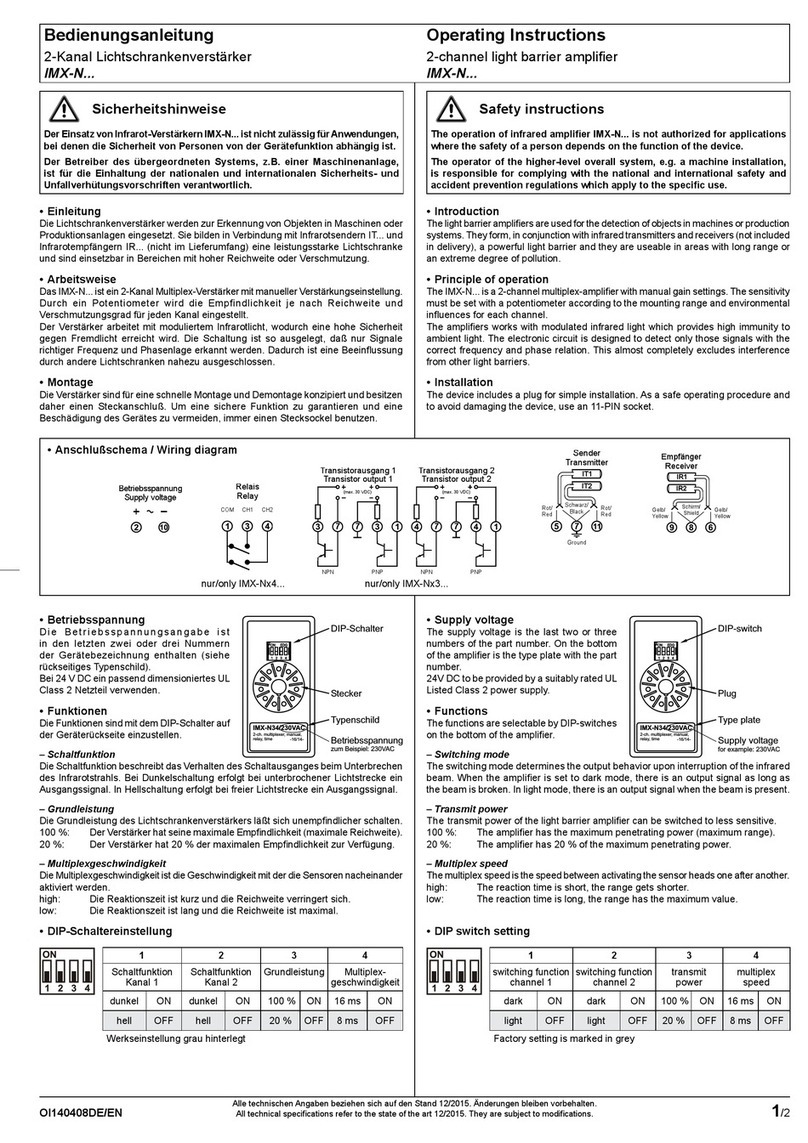
Pantron
Pantron IMX-N Series operating instructions

Bladelius
Bladelius Thor user manual
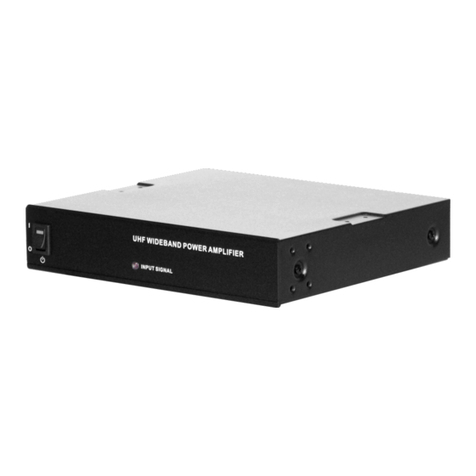
Linear Technologie
Linear Technologie LC3.VGB Operation manual
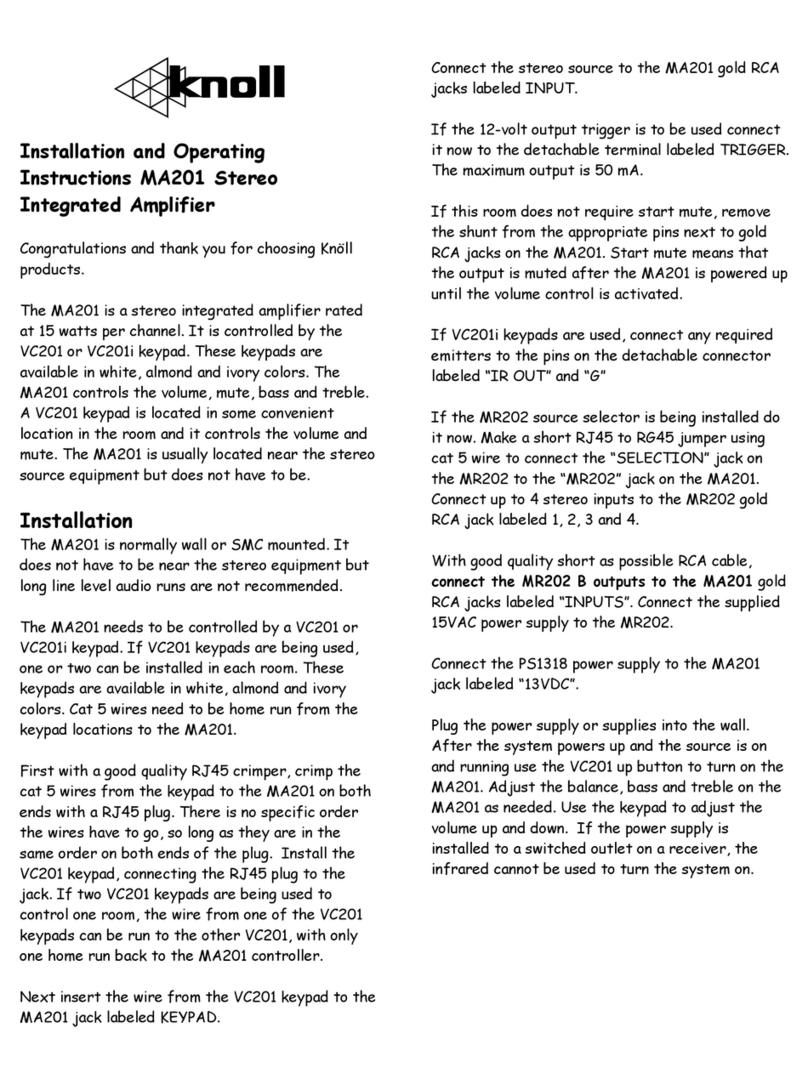
Knoll
Knoll MA201 Installation and operating instructions

Conrad-johnson design
Conrad-johnson design PREMIER SIX owner's manual
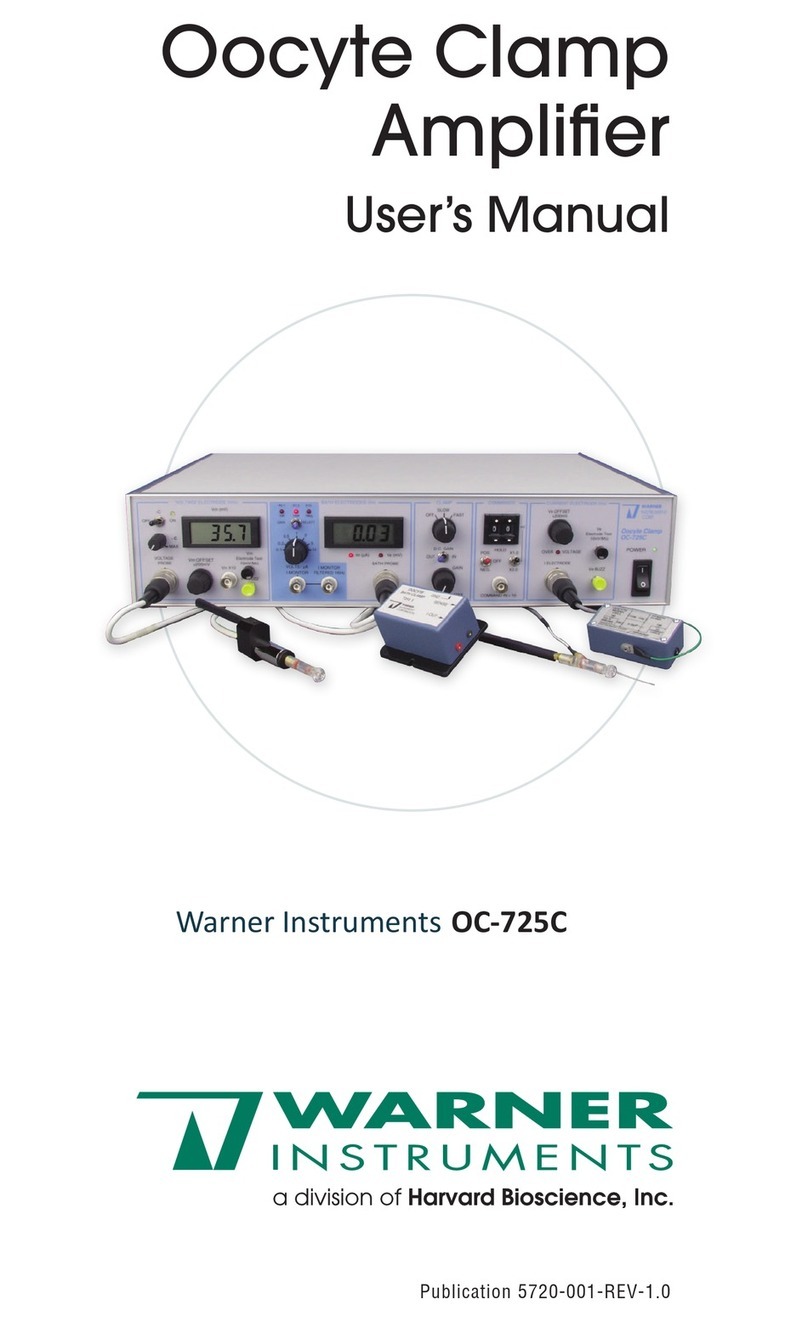
Warner
Warner OC-725C user manual
